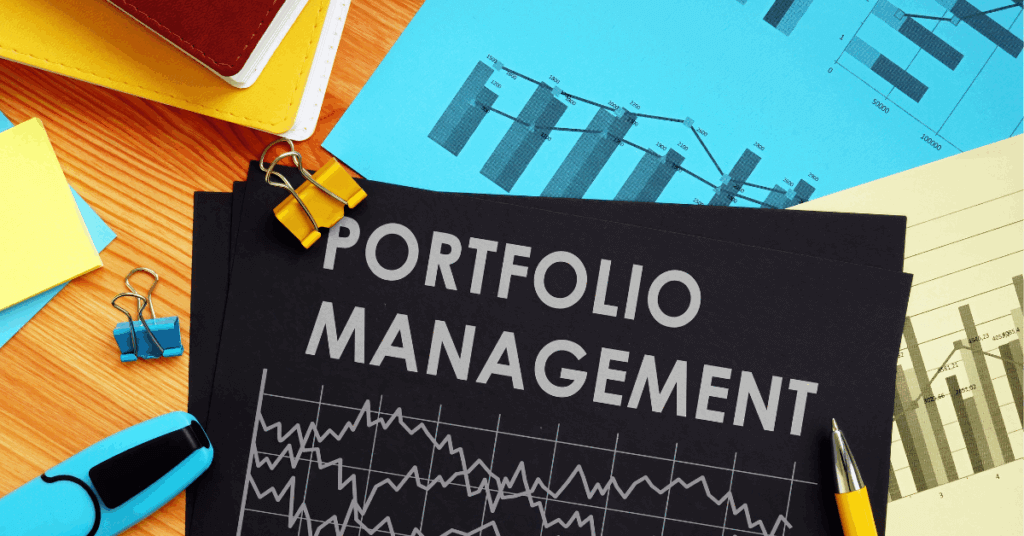Year-End Investment Portfolio Review: What to Look At Before December
August 22, 2025
Year-End Investment Portfolio Review: What to Look At Before December
August 22, 2025
Share this post:

The end of the year is a natural checkpoint for reviewing your investment portfolio. Market movements over the past months may have shifted allocations, and personal goals often evolve over time. Taking a moment to assess what you own before the calendar turns can help you determine whether your investments still align with where you want to go.
A year-end review is a chance to see what’s changed, confirm that your investment mix still reflects your goals and comfort with risk, and decide whether there are any steps to take now instead of later. Below are a few areas investors often revisit before year-end.
Check How Your Portfolio Has Shifted
Markets rarely move evenly across all types of investments. Over time, some areas of a portfolio can grow faster than others. When that happens, the balance that once felt right may drift.
What began as a mix that fit your goals can gradually become unbalanced as one part becomes a larger share than intended. Taking time to review how your money is allocated offers a clearer view of whether your portfolio still supports your strategy.
Looking at your current allocations between stocks, bonds, and cash can highlight whether you want to rebalance your portfolio to bring it closer to your original plan. Small adjustments now can help you stay on track, rather than letting market shifts steer your investments without intention.
Identify Tax-Loss Harvesting Opportunities
A year-end portfolio review often includes a look at positions that have lost value during the year. Selling investments at a loss (known as tax-loss harvesting) can help offset realized gains from other investments. If your losses exceed your gains, you may even be able to reduce ordinary income, with any remaining losses carried forward to future tax years.
Harvesting losses also gives you the opportunity to reconsider whether those positions still belong in your portfolio. It may be a chance to shift into holdings that better align with your plan.
Because timing plays a critical role, waiting until the last weeks of December can limit your flexibility. Reviewing gains and losses earlier allows you to make thoughtful decisions about what to sell, how to reinvest, and how those moves support your broader financial goals.
Evaluate Capital Gains and Distribution Timing
Taking stock of your realized capital gains can help you understand your current tax picture before adding more. Profits from sold investments add to your taxable income, so knowing what’s already been realized can help you determine whether additional sales make sense this year or whether it might be better to wait.
Withdrawals from taxable or retirement accounts also impact your income. If you’re planning a large distribution, consider the timing. In some cases, spreading sales or withdrawals across multiple years may reduce the tax burden. Looking at these items now gives you more clarity and control ahead of tax season.

Align Your Portfolio with Your Goals
This is also a great time to revisit the bigger picture. Investments that once felt like a good fit may no longer reflect where you are today. Life changes, new priorities, or a shortened timeline can all affect what you need from your money.
Think about what’s most important right now: Are you still focused on long-term growth? Do you have upcoming expenses that may require access to cash in the near future?
These questions can help you assess whether your current investment mix supports your current needs. You might decide to lower your risk exposure, hold more liquid assets to prepare for near-term costs, or shift a portion of your portfolio to match shorter-term goals. Rechecking this alignment regularly helps keep your strategy rooted in what matters most to you.
Reassess Diversification and Risk Exposure
As markets move, certain parts of your portfolio may become overweight. When one area grows disproportionately, it can increase your risk exposure and reduce balance.
An end-of-year review allows you to check whether your portfolio is properly diversified, which is a key component of risk management. A well-diversified mix can help balance growth with stability.
Comfort with risk can change, especially as personal circumstances evolve. Reviewing your exposure across asset classes, sectors, and geographies can reveal if adjustments are needed to bring things back in line with your current outlook. If you’re unsure whether your portfolio is diversified appropriately, this guide to portfolio diversification can help.
Final Thoughts
Year-end is a natural time to pause and make sure your financial plan is still moving in the right direction. Even a brief check-in can reveal important insights and help clarify what deserves your attention in the months ahead.
If you’d like to talk through your own investments and priorities, connect with a financial professional from our team. And if you’re looking for a simple place to begin, download the Smart Year-End Financial Moves Checklist. It outlines the most important topics to revisit before the year wraps up.
Standard Disclosure
This blog expresses the author’s views as of the date indicated, are subject to change without notice, and may not be updated. The information contained within is believed to be from reliable sources. However, its accurateness, completeness, and the opinions based thereon by the author are not guaranteed – no responsibility is assumed for omissions or errors. This blog aims to expose you to ideas and financial vehicles that may help you work towards your financial goals. No promises or guarantees are made that you will accomplish such goals.
Past performance is no guarantee of future results, and any expected returns or hypothetical projections may not reflect actual future performance or outcomes. All investments involve risk and may lose money. Nothing in this document should be construed as investment, tax, financial, accounting, or legal advice. Each prospective investor must evaluate and investigate any investments considered or any investment strategies or recommendations described herein (including the risks and merits thereof), seek professional advice for their particular circumstances, and inform themselves about the tax or other consequences of any investments or services considered.
Investment advisory services are offered through Liberty Wealth Management, LLC (“LWM”), DBA Liberty Group, an SEC-registered investment adviser. For additional information on LWM or its investment professionals, please visit www.adviserinfo.sec.gov or contact us directly at 411 30th Street, 2nd Floor, Oakland, CA 94609, T: 510-658-1880, F: 510-658-1886, www.libertygroupllc.com. Registration with the U.S. Securities and Exchange Commission or any state securities authority does not imply a certain level of skill or training.
References
Chen, James. (May 17, 2025). What is a Liquid Asset, and What Are Some Examples? (Investopedia). https://www.investopedia.com/terms/l/liquidasset.asp
IRS. (n.d.) Topic no. 409, capital gains and losses. https://www.irs.gov/taxtopics/tc409
